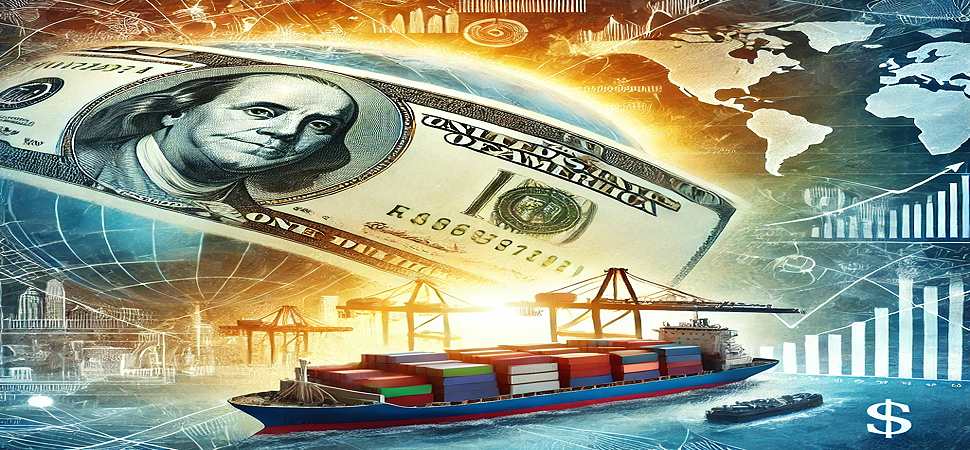11.01.2025
Евгений Лебедев
95

With the end of World War II, a new era of the world economy began in which the U.S. dollar took center stage. Its journey to becoming the world's premier currency has been complex and multifaceted, drawing on historical events, the stability of the American economy, and the geopolitical influence of the United States. This unique status of the dollar not only strengthened the U.S. position on the world stage, but also became the basis of international financial systems, influencing trade, investment and macroeconomic policies of most countries.
Historical background to the formation of the dollar
In the 19th century, the US economy was actively developing due to the Industrial Revolution and the growth of international trade. Nevertheless, until the early 20th century, the British pound sterling remained the dominant world currency, which relied on Britain's colonial empire and its stable economy. The First World War significantly changed the balance of power: economic losses of Great Britain and European countries opened opportunities for strengthening the position of the dollar. Later, the transition from the gold standard to a more flexible settlement system in the 20th century was one of the key stages that gave the dollar global recognition.
The role of the Bretton Woods Conference
One of the most important moments explaining how the dollar became the world's main currency was the Bretton Woods Conference of 1944. Representatives from 44 countries gathered to create a new financial system that would provide stability and economic recovery after the war. As a result, the U.S. dollar was pegged to gold and other currencies were pegged to the dollar. This move bolstered confidence in the U.S. economy and secured the dollar's status as the world's reserve currency.

The economic power of the United States
The economic power of the United States played a key role in how the dollar became the world's major currency. After World War II, the U.S. economy remained largely intact while European and Asian countries needed to rebuild. The U.S. provided loans, such as the Marshall Plan, which only increased the dollar's influence in international payments. One of the reasons why the dollar became the world's major currency is its use in international trade.
Oil, gold, and other key commodities are valued in dollars, making this currency a universal medium of exchange. Many countries hold their foreign exchange reserves in dollars, reinforcing its importance on a global level. In 1971, the U.S. abandoned the dollar's peg to gold, ending the Bretton Woods system. Nevertheless, the dollar continued to be the world's major currency due to its stability and confidence in the U.S. economy. Floating exchange rates allowed the dollar to adapt to changes in world markets, maintaining its key role.
Political influence and geopolitical role of the United States
The political power of the United States also explains how the dollar became the world's major currency. Its military presence, participation in international organizations and influence on global decision-making create an environment in which the dollar is perceived as a reliable currency. This strengthens its position even in economic crises. Investors from all over the world trust the dollar, which contributes to its status as a major currency.
U.S. government bonds are considered one of the safest assets, which makes the dollar a preferred choice in times of global instability. This factor also explains how the dollar became the world's top currency and why it continues to dominate. Even so, there are currencies that are trying to compete with it. The euro, the yuan, and even cryptocurrencies are trying to gain a place in international settlements. However, none of them have yet been able to achieve the same level of trust and stability as the dollar.

Why does the dollar remain in charge?
How the dollar became the world's premier currency is explained by a combination of historical, economic, and political factors. Its status is supported not only by the strength of the U.S. economy, but also by the sustained confidence of the international community. Despite challenges from other currencies and technologies, the dollar continues to be the backbone of the world's financial system, underscoring its exceptional importance in the global economy.

/ Reviews